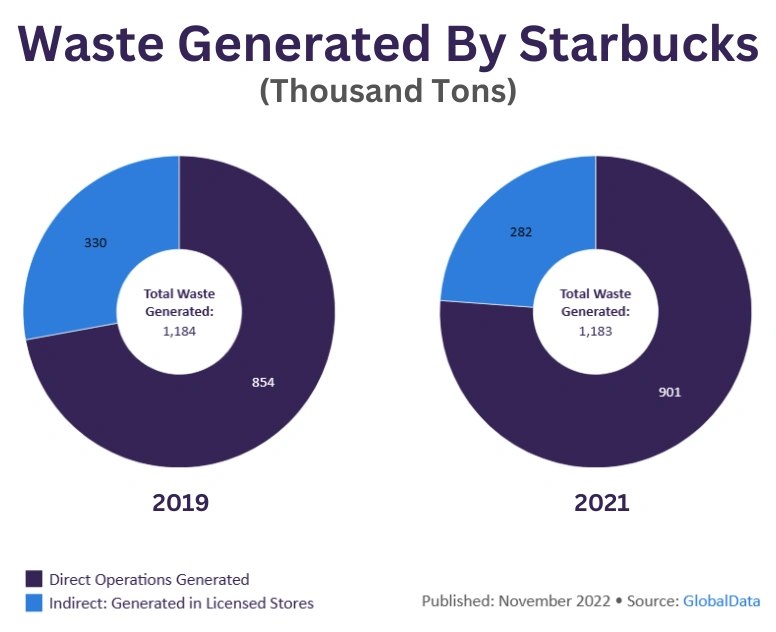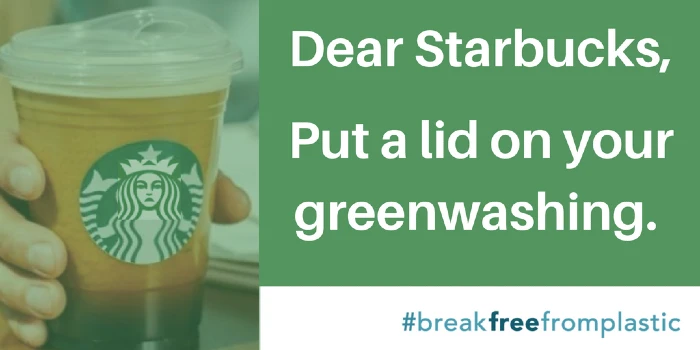Environmental consciousness is increasingly influencing consumer choices, which is a good thing in many respects, unfortunately corporations like Coca-Cola and Starbucks have taken advantage of this with headlines of their eco-friendly claims.
But how genuine are these initiatives? We’re going to dig into their environmental marketing strategies, compare them with the reality of their practices, and decide whether these two global leaders are making a profound environmental difference or just slapping us all in the face with more greenwashing.
Coca-Cola: Clear Bottles, Opaque Intentions?
In August 2022, Coca-Cola, one of the world’s largest beverage companies, announced a shift from green to clear Sprite bottles to improve recyclability. The company got some good publicity but, even then, experts questioned the claims. While this appears to be a step towards sustainability, its real environmental impact one year later leaves a lot to be desired.
The Marketing Claims
Coca-Cola asserts that clear PET bottles are more recyclable than colored ones. They claim this change will reduce plastic waste and contribute to a circular economy for plastic packaging. The company spent millions of dollars on a marketing campaign attesting to their eco-friendly claims surrounding the Sprite bottle color change through social media ads, billboards, and TV commercials.
Breaking Down the Truth
Recycling data shows a different story.
According to the Environmental Protection Agency (EPA), the recycling rate for PET bottles and jars was only about 29% in recent years. Despite the change in bottle color, the vast majority of these plastic bottles still end up in landfills or the environment. Experts argue that the focus should be on reducing single-use plastics altogether, rather than minor modifications in their design.
One year on and Coca-Cola hasn’t released any data to support their original claims, nor could any be found.

Starbucks: Strawless Lids and Plastic Paradox
In 2018 Starbucks announced that it would phase out all straws in favor of, what amounted to, a design like a children’s sippy cup. The claim was bold, and the company rode a nice wave of free publicity as it marketed the introduction of strawless lids as an environmentally friendly alternative to traditional straws, but the reality is more complex.
Marketing Claims
Starbucks presented its strawless lids as a sustainable choice, aligning with the global movement against plastic straws, which are often seen littering oceans and harming marine life.
Breaking Down the Truth
While the lids eliminate the need for plastic straws, they’re still made of plastic – and in many cases, use more plastic than the old lid-and-straw combination. Furthermore, the lids are only recyclable in areas with proper facilities, leaving their environmental benefit questionable.
Starbucks did as they promised. They eliminated plastic straws beginning in 2019 and into 2020 from 30,000 stores within the last two years, replacing them with the new adult sippy cup design. But has this change made any noticeable impact on the trash or recycling produced from Starbucks stores?
The graph below shows the amount of waste, in a thousand tons, generated by Starbucks in 2019 and then in 2021 after the strawless initiative was completed. At most, we’re looking at a 1% difference.

A report from Greenpeace highlighted that only 9% of all the plastic ever made has been recycled. The rest accumulates in landfills or the environment. The shift to strawless lids, without a broader strategy to reduce overall plastic use, doesn’t significantly alter Starbucks’ environmental footprint.
“Replacing one type of plastic with another is not the solution we need,” notes Greenpeace campaigner Laura Fernandez. “Companies like Starbucks must lead in reducing single-use plastics, not just reshaping them.”
More To Discover
- Al Dhafra Solar Farm: The World’s Largest Single-Site Solar Farm Shines On The UAE’s Renewable Energy Ambitions
- Florida’s Sizzling Seas Force Scientists to Relocate Coral to Safer Waters
- The Secretive Shift in Pet Food Regulation: What Every Pet Owner Needs to Know
- Top 10 Battery Technologies to Watch in 2024

Conclusion: Beyond Marketing Gimmicks
The environmental claims of Coca-Cola and Starbucks demonstrate the complexities and challenges in corporate sustainability efforts. While these initiatives may be steps in the right direction, experts and environmental data suggest that more radical changes are required to make a significant environmental impact. In short, we must label both claims as 100% greenwashing. True sustainability in corporate practices involves a fundamental shift away from single-use plastics and a genuine commitment to reducing overall environmental footprints.



















